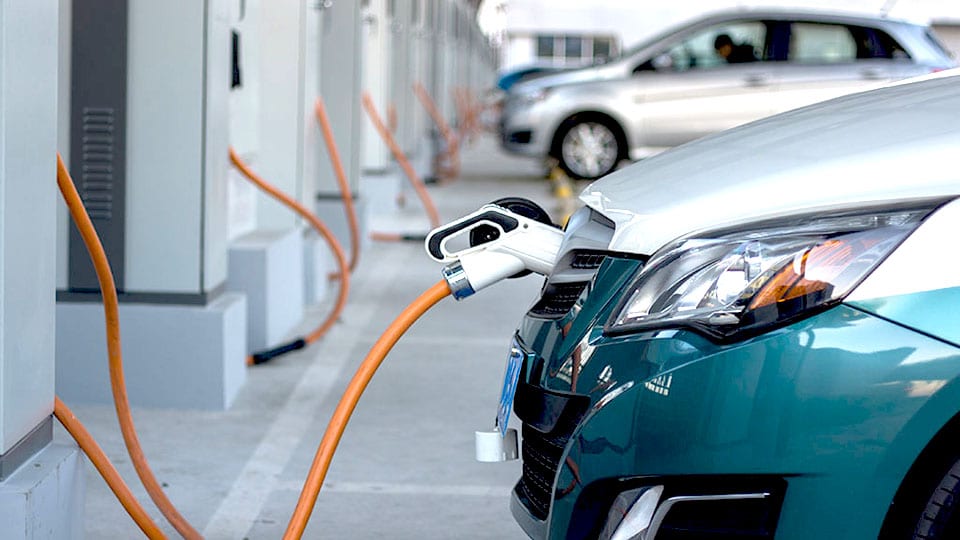
With the increase in the number of new energy vehicles in the areas of family vehicles, official vehicles and buses, taxis, and logistics vehicles, according to the material, the annual sales volume of China’s new energy vehicles will reach the total demand of the automobile market in 2020. More than 5% of the new energy vehicle industry system will be initially established with market-oriented, enterprise-oriented, and closely separated production, education and research. In 2025, it will increase to about 20%, which constitutes an independent and controllable industrial chain. Under the national carbon emission target and the primary energy substitution catalogue, the annual sales volume of new energy vehicles will continue to improve significantly in 2030, with a range exceeding 10 million. Car.The implementation of the new energy vehicle strategy, China started not too late, as early as 2001, the new energy vehicles were included in the "863" serious scientific and technological issues during the "10th Five-Year Plan" period. In recent years, governments at all levels have implemented policies such as car subsidies and licensing priorities to promote the consumption of new energy vehicles. The demand and development of new energy vehicles will drive the development of various types of automotive batteries, lightweight bodies and auto parts under the new energy era, and also bring unlimited market opportunities to China's aluminum industry.Unlike traditional cars, new energy vehicles use batteries as the driving force to drive the car. It is limited by the weight of the power battery, the battery life limit, and the high voltage of the vehicle energy-saving and emission reduction policy. In the vehicle design and data application, the car body Lightweight has become the first question for car companies to think about. Therefore, battery-powered new energy vehicles are more urgent than traditional cars to reduce weight. This also opens up wider market space for lightweight materials such as aluminum.In the lightweight materials of automobiles, the comprehensive cost performance of aluminum alloy profiles is higher than that of steel, magnesium, plastics and composite materials. It has advantages in application technology, operation safety and recycling applications. As long as the density of the aluminum material is 1/3 of that of the steel, the weight reduction and energy saving effect are obvious, and the warmth of the ride can be better improved under the premise of ensuring safety. At the same time, aluminum materials are increasingly easy to recycle for cyclic applications. The comprehensive cost performance advantage of aluminum has determined that it has become the choice for automotive lightweight applications.The main applications of aluminum in new energy auto parts are body, hub, chassis, anti-collision beam, floor, power battery and seat. According to the processing method, aluminum for automobiles is mainly divided into three types: die casting, extrusion and calendering. The amount of die castings accounts for about 80%, and the extruded parts and rolled parts each account for about 10%. Die-casting parts are mainly used for launching machines, wheels and other parts. Extrusion parts are mainly used for frame, luggage rack, door beam, etc., and the rolled parts are mainly aluminum plates for consumer body.Among them, the body includes a body frame made of high-performance aluminum profiles and skins and doors made of high-precision aluminum sheets; aluminum alloy wheels (cast aluminum wheels or forged aluminum wheels); the chassis includes high-strength large-section aluminum profiles and aluminum Alloy forgings; bumper bumpers made of profiles; new energy passenger car floor; lithium-ion battery including battery positive aluminum foil, battery aluminum shell and battery aluminum tray (European battery trays are all aluminum alloy profiles, domestic battery trays have aluminum Alloy material, also available in stainless steel); new energy bus seat system.In the past, new energy vehicles used steel materials to manufacture electric vehicle power battery trays. Today, many companies mainly use aluminum alloy profiles. The density of the aluminum alloy profile is 2.7g/cm3, and the aluminum alloy material has obvious advantages in terms of tightening and welding. The magnesium alloy has a density of 1.8g/cm3 and the carbon fiber is 1.5g/cm3. These materials can be used to consume battery trays, which will greatly improve the lightweight of new energy vehicles.It is understood that the battery aluminum tray mainly uses 6 series aluminum profiles. Good plasticity and corrosion resistance, especially stress-free corrosion cracking tendency, good welding performance, making 6-series aluminum profiles very suitable for the application of the project. In order to ensure the quality of production, advanced welding technology such as friction stir welding is required to ensure the integral molding of the product.New energy vehicles use more aluminum than ordinary cars. The high-speed development of new energy vehicles in China will certainly promote the potential of aluminum in the market segment of new energy vehicles, and aluminum processing enterprises seize this opportunity to develop High-performance, adaptable aluminum or deep-processed aluminum parts undoubtedly open up new sales orientations for enterprises to diversify their application needs.
Stay Connect